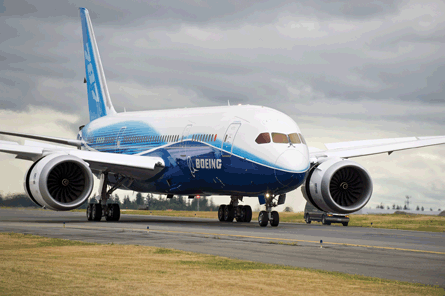Boeing last week set out to resolve doubts hanging over its troubled 787 programme by unveiling plans for a first flight by year-end and first delivery during the fourth quarter of 2010.
And, as the airframer outlined plans to bring the programme back on track after bringing assembly to a halt in June after discovering the need for major structural redesign of the wing-body join and fuselage barrels, it confirmed earlier reports that it is looking to speed construction of the 850 aircraft on order with a second final assembly line.
That line, says Boeing, may go to North Charleston, South Carolina, where its Vought division builds 787 subassemblies and, it revealed, it has already filed permit applications. Such a move would be Boeing's first assembly operation outside its historic Everett, Washington home.
Vice president of airplane programmes Pat Shanahan says Boeing also revised its production plan to achieve a rate of 10 787s a month by the end of 2013, one year later than had been previously planned.
 |
|---|
© Boeing |
Boeing Commercial Airplanes president Scott Carson adds that without a second final assembly line, the company would only be able to produce seven 787s a month.
The latest schedule adds an additional six to nine months to the almost two years of delays already incurred. First delivery to Japan's All Nippon Airways was originally planned for May 2008.
Shanahan says that ZA001, Boeing's first 787, is "functionally ready to fly on all accounts" aside from the side of wing-body structural modifications, the design of which is nearly complete. Boeing will install the side of body modification on the static test aircraft and ZA001 concurrently, with full scale static testing to take place before flight.
In addition, Boeing has declared that the first three of six flight-test aircraft "have no commercial market value beyond the development effort due to the inordinate amount of rework and unique and extensive modifications made to those aircraft."
As a result, the company has taken a write-off of $2.5 billion.
Source: Flight International























